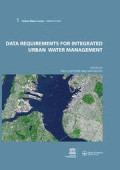
Data Requirements for Integrated Urban Water Management
Integrated urban water management relies on data allowing us to analyse, understand and predict the behaviour of the individual water cycle components and their interactions. The concomitant monito…
- Edisi
- Ed. 1, Cet. 1
- ISBN/ISSN
- 978-0-415-45345-5
- Deskripsi Fisik
- xxxvii, lus.; 337 hal.; 17 x 25 cm.; indeks.
- Judul Seri
- -
- No. Panggil
- 628.1 FLE d

Earthquake Protection of Essential Building Equipment: Design, Engineering, I…
This book addresses that perplexing problem: how to maintain operability of equipment after a major earthquake. The program is often more complicated than simple anchorage. Some critical types of e…
- Edisi
- Ed. 1, Cet. 1
- ISBN/ISSN
- 0-471-06270-7
- Deskripsi Fisik
- xiv, 464 hal.; ilus.; 16,5 x 24 cm.; indeks.
- Judul Seri
- -
- No. Panggil
- 693.8 MCG e
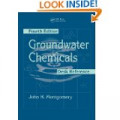
Groundwater Chemicals Desk Reference
Building on the foundation set by its best-selling predecessors, the Groundwater Chemicals Desk Reference, Fourth Edition is both a broad, comprehensive desk reference and a guide for field researc…
- Edisi
- Ed. 4, Cet. 1
- ISBN/ISSN
- 978-0-8493-9276-4
- Deskripsi Fisik
- xliii, 1701 hal.; ilus.; 18 x 26 cm.; indeks.
- Judul Seri
- -
- No. Panggil
- 628.1 MON g
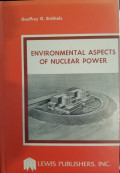
Environmental Aspects of Nuclear Power
The book Environmental Aspects of Nuclear Power by Geoffrey G. Eichholz investigates the environmental impacts of nuclear power generation and nuclear technology more broadly. Eichholz discusses re…
- Edisi
- Ed. 1, Cet. 3
- ISBN/ISSN
- 0-250-40138-X
- Deskripsi Fisik
- xx, 683 hal.; ilus.; 15,6 x 23,6 cm.; indeks.
- Judul Seri
- -
- No. Panggil
- 621.48 EIC e
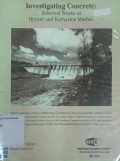
Investigating Concrete: Select Works of Bryant and Katharine Mather
In October 2000, the American Concrete Institute’s Technical Activities Committee approved publication of a commemorative compilation honoring Bryant Mather for his significant contributions to c…
- Edisi
- Ed. 1, Cet. 1
- ISBN/ISSN
- 0-87031-158-1
- Deskripsi Fisik
- 259.; ilus.; 21,3 x 27,6 cm.
- Judul Seri
- -
- No. Panggil
- 620 OZY i
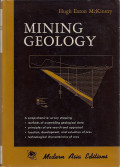
Mining Geology
"What does a mining geologist do?" In asking this question, people who are unfamiliar with the mining industry sometimes betray mild surprise that a science associated with dinosaurs, earthquakes, …
- Edisi
- Ed. 1, Cet. 1
- ISBN/ISSN
- -
- Deskripsi Fisik
- xix, 680 hal.; ilus.; 15,3 x 21,5 cm.
- Judul Seri
- -
- No. Panggil
- 622 MCK m
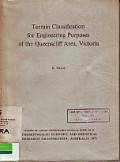
Terrain Classification for Engineering Purposes of the Queenscliff Area, Vict…
The terrain of the Queenscliff area, Victoria (SJ55-9) has been classified for engineering purposes in accordance with a scheme discussed by Aitchison and Grant (1967) and described in detail by Gr…
- Edisi
- Ed. 1, Cet. 1
- ISBN/ISSN
- 0-643-00029-1
- Deskripsi Fisik
- 199 hal.; ilus.; 17,2 x 24,2 cm.
- Judul Seri
- -
- No. Panggil
- 631.4 GRA t
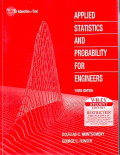
Applied Statistics and Probability for Engineers
This is an introductory textbook for a first course in applied statistics and probability for undergraduate students in engineering and the physical or chemical sciences. These individuals play a s…
- Edisi
- Ed. 3, Cet. 10
- ISBN/ISSN
- 9812-53-058-4
- Deskripsi Fisik
- xiv, 709 hal.; ilus.; 18,5 x 24,3 cm.
- Judul Seri
- -
- No. Panggil
- 607.2 MON a
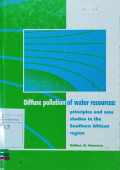
Diffuse Pollution of Water Resources Principles and Case Studies in the South…
The book is valuable as a supplementary text for undergraduate and postgraduate students whose studies include a component of water resources and environmental engineering and management, including…
- Edisi
- Ed. 1, Cet. 1
- ISBN/ISSN
- 0-415-38391-9
- Deskripsi Fisik
- xix, 272 hal.; ilus.; 18,7 x 25 cm.
- Judul Seri
- -
- No. Panggil
- 628.1 HRA d
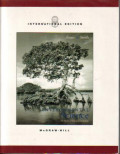
Environmental Science: A Study of Interrelationships
Environment science is an interdisciplinary field. We must include both when seeking solutions to environmental problems because environmental disharmonies occur as a result of the interaction betw…
- Edisi
- Ed. 9, Cet. 10
- ISBN/ISSN
- 0-07-244000-7
- Deskripsi Fisik
- xxv, 476 hal.; ilus.; 23 x 27,5 cm.
- Judul Seri
- -
- No. Panggil
- 628 ENG e
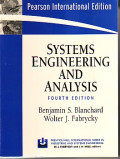


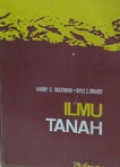

 Karya Umum
Karya Umum  Filsafat
Filsafat  Agama
Agama  Ilmu-ilmu Sosial
Ilmu-ilmu Sosial  Bahasa
Bahasa  Ilmu-ilmu Murni
Ilmu-ilmu Murni  Ilmu-ilmu Terapan
Ilmu-ilmu Terapan  Kesenian, Hiburan, dan Olahraga
Kesenian, Hiburan, dan Olahraga  Kesusastraan
Kesusastraan  Geografi dan Sejarah
Geografi dan Sejarah